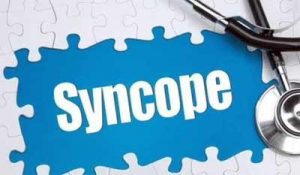- Home
- Editorial
- News
- Practice Guidelines
- Anesthesiology Guidelines
- Cancer Guidelines
- Cardiac Sciences Guidelines
- Critical Care Guidelines
- Dentistry Guidelines
- Dermatology Guidelines
- Diabetes and Endo Guidelines
- Diagnostics Guidelines
- ENT Guidelines
- Featured Practice Guidelines
- Gastroenterology Guidelines
- Geriatrics Guidelines
- Medicine Guidelines
- Nephrology Guidelines
- Neurosciences Guidelines
- Obs and Gynae Guidelines
- Ophthalmology Guidelines
- Orthopaedics Guidelines
- Paediatrics Guidelines
- Psychiatry Guidelines
- Pulmonology Guidelines
- Radiology Guidelines
- Surgery Guidelines
- Urology Guidelines
2018 ESC Guidelines for Diagnosis and Management of Syncope

The first ESC Guidelines for the management of syncope were published in 2001, with subsequent versions in 2004 and 2009. In March 2015, the ESC CPG considered that there were enough new data to justify the production of new Guidelines.The Task Force for the diagnosis and management of syncope of the European Society of Cardiology (ESC) has come out with latest 2018 ESC Guidelines for Diagnosis and Management of Syncope.The Guideline has been published in European Heart Journal.The changes in 2018 Guidelines with respect to previous guidelines is given below in a tabular form.
Key Points :
- Syncope is defined as transient loss of consciousness (TLOC) due to cerebral hypoperfusion, characterized by a rapid onset, short duration, and spontaneous complete recovery.
- At the time of initial evaluation, clinicians should answer the following key questions:
- Was the event TLOC?
- In cases of TLOC, are they of syncopal or nonsyncopal origin?
- In cases of suspected syncope, is there a clear etiological diagnosis?
- Is there evidence to suggest a high risk of cardiovascular events or death?
- Is there a serious underlying cause that can be identified?
- If the cause is uncertain, what is the risk of a serious outcome?
- Should the patient be admitted to the hospital?
- All patients should undergo a complete history, physical examination (including standing blood pressure measurement), and standard electrocardiogram (ECG). ECG monitoring (in bed or telemetry) should be performed in high-risk patients when there is a suspicion of arrhythmic syncope.
- An echocardiogram should be performed when there is previous known heart disease, or data suggestive of structural heart disease or syncope secondary to cardiovascular cause. Carotid sinus massage should be performed in patients >40 years of age with syncope of unknown origin compatible with a reflex mechanism. In addition, tilt testing should be performed in cases where there is suspicion of syncope due to reflex or an orthostatic cause.
- Prolonged ECG monitoring (external or implantable) should be performed in patients with recurrent severe unexplained syncope who have all of the following three features:
- Clinical or ECG features suggesting arrhythmic syncope.
- A high probability of recurrence of syncope in a reasonable time.
- Who may benefit from a specific therapy if a cause for syncope is found.
- Electrophysiological study should be performed in patients with unexplained syncope and bifascicular bundle branch block (impending high-degree atrioventricular [AV] block) or suspected tachycardia, and an exercise stress test performed in patients who experience syncope during or shortly after exertion.
- All patients with reflex syncope and orthostatic hypotension should have the diagnosis explained, reassured, explained the risk of recurrence, and given advice on how to avoid triggers and situations. These measures are the cornerstone of treatment and have a high impact in reducing the recurrence of syncope.
- In patients with severe forms of reflex syncope, one or more of the following additional specific treatments according to the clinical features may be selected:
- Midodrine or fludrocortisone in young patients with low blood pressure phenotype.
- Counter-pressure maneuvers (including tilt training if needed) in young patients with prodromes.
- Implantable loop recorder guided management strategy in selected patients without or with short prodromes.
- Discontinuation/reduction of hypotensive therapy targeting a systolic blood pressure of 140 mm Hg in older hypertensive patients.
- Pacemaker implantation in older patients with dominant cardioinhibitory forms.
- In patients with orthostatic hypotension, one or more of the following additional specific treatments may be selected according to clinical severity:
- Education regarding lifestyle maneuvers.
- Adequate hydration and salt intake.
- Discontinuation/reduction of hypotensive therapy.
- Counter-pressure maneuvers.
- Abdominal binders and/or support stockings.
- Head-up tilt sleeping.
- Midodrine or fludrocortisone.
- The diagnostic process should be reevaluated and alternative therapies considered if the above rules fail or are not applicable to an individual patient. Even though guidelines are based on the best available scientific evidence, treatment should always be tailored to an individual patient’s need and be patient centered.
For further reference log on to :
https://doi.org/10.1093/eurheartj/ehy037
cardiovascularDiagnosisECGelectrocardiogramElectrophysiologicalESCEuropean Heart JournalEuropean Society of CardiologyfludrocortisonehypotensionMidodrinenonsyncopalorthostaticsyncopalSyncopeTLOCtransient loss of consciousness
Source : with inputsNext Story
NO DATA FOUND

Disclaimer: This site is primarily intended for healthcare professionals. Any content/information on this website does not replace the advice of medical and/or health professionals and should not be construed as medical/diagnostic advice/endorsement or prescription. Use of this site is subject to our terms of use, privacy policy, advertisement policy. © 2020 Minerva Medical Treatment Pvt Ltd